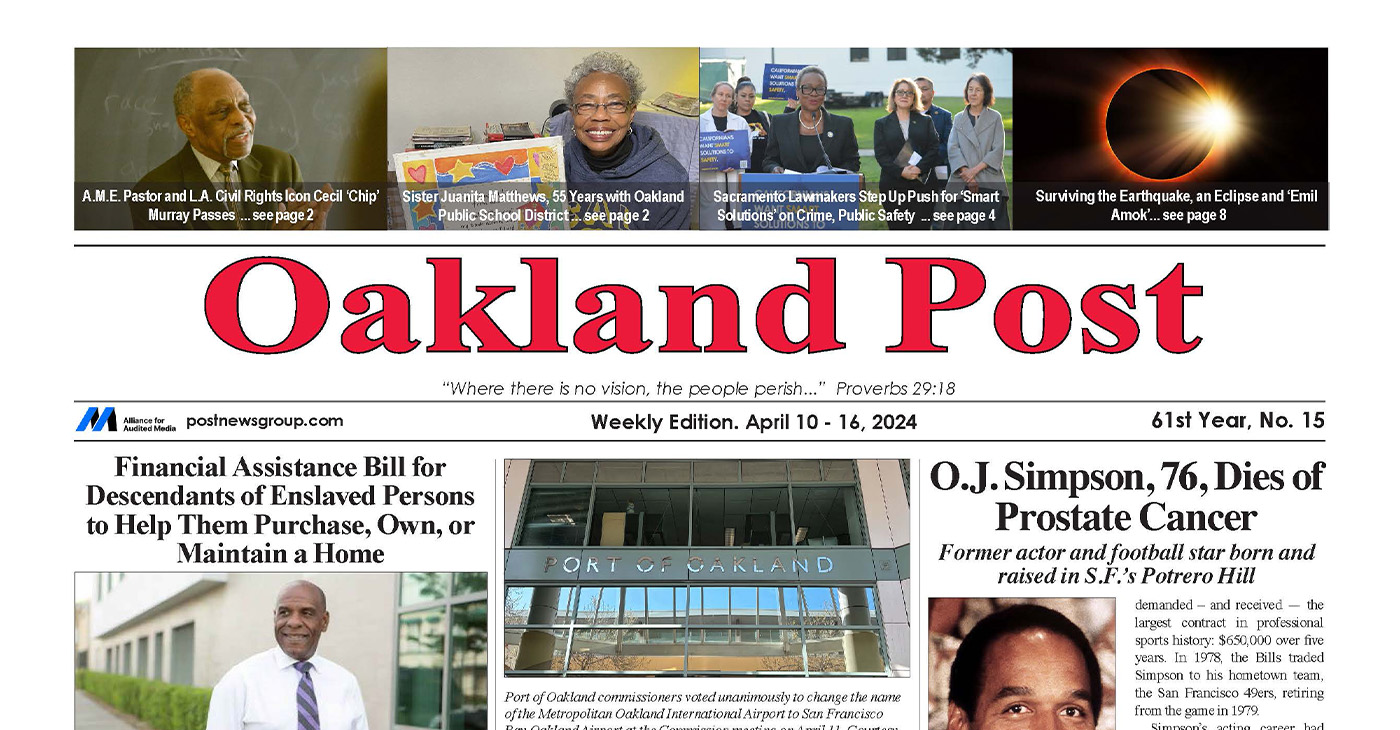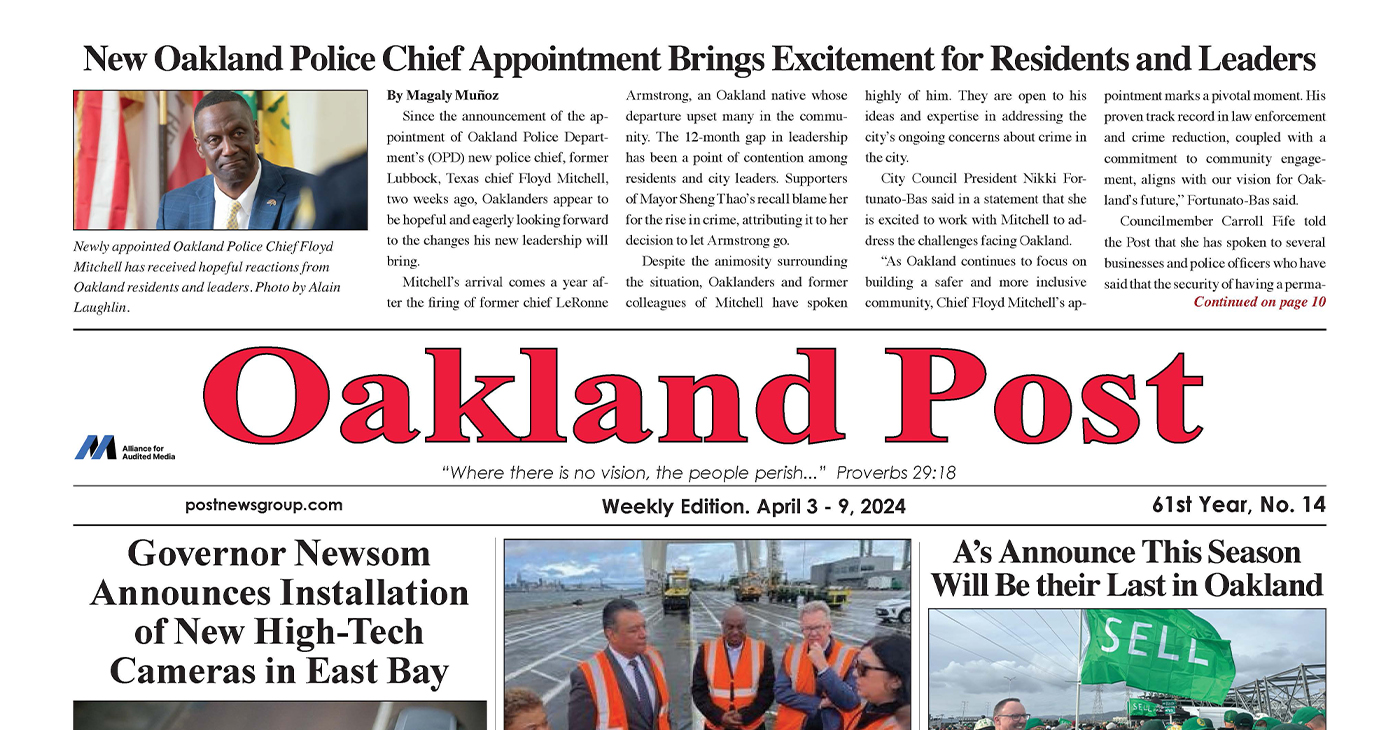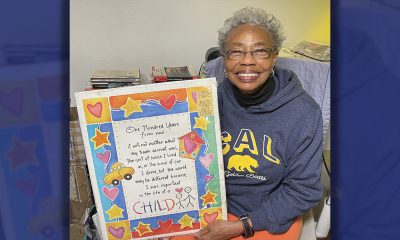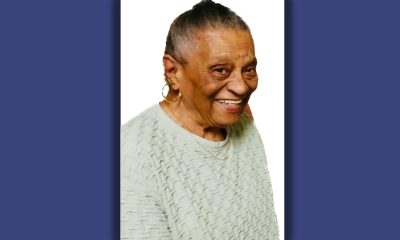Books
Poet James Cagney on Closure, Reckoning’s Limits, and What’s Next
Oakland poet James Cagney was 19 when he asked his mother “Are you really my mother?” Her answer changed his life forever. He learned he was adopted, that his birth parents, who already had seven children, couldn’t afford to raise him.

Oakland poet James Cagney was 19 when he asked his mother “Are you really my mother?” Her answer changed his life forever. He learned he was adopted, that his birth parents, who already had seven children, couldn’t afford to raise him.
As a baby, Cagney had been given to an older couple who raised him. His adoptive mother had been his birth mother’s teacher in cosmetology school. The women knew each other well, but Cagney never knew his birth family as a child.
Cagney grew up as an only child in North Oakland and forged a close, loving relationship with his mother. But things were different with the man who raised him. While Cagney has emphasized that his father wasn’t abusive, his parenting was passive and detached. In his poem “Someone Else’s Child,” Cagney asks “Did you ever hold me as a baby?” to which his father answers “Naw. ‘fraid I’d drop you. ‘sides. You were someone/else’s child.”
After learning about his adoption, Cagney’s life would become even more turbulent in about the next dozen years. During that time, the parents who raised him died. Then there was the literal earth shaking, the 1994 Northridge Earthquake, contributed to him losing the home he grew up in, and he became homeless.
He bounced around as a guest in friend’s homes, lived in an SRO, and most notably, lived with his birth mother in Sacramento for about two years. He forged complex, difficult, but ultimately rewarding and loving relationships with much of his birth family, but he never got to meet his birth father, who died before Cagney even knew he existed.
He began penning deeply autobiographical poetry about his familial experiences. It would take him about 20 years to write and collect this poetry into his first book, “Black Steel Magnolias in the Hour of Chaos Theory.” He was 50 when the Oakland-based Nomadic Press published it in 2018.
Since then, he’s become a celebrated and widely read poet. “Black Steel Magnolias in the Hour of Chaos Theory” sold out of its first print run and Nomadic Press just reissued it in a second printing with a new foreward and introduction. His next book, “Martian: The Saint of Loneliness,” just won the James Laughlin Award from the Academy of American Poets. Nomadic Press will publish it fall of 2022.
I talked with Cagney, now 53 and living in East Oakland, about his experience writing and publishing “Black Steel Magnolias in the Hour of Chaos Theory.” We also talked a little bit about “Martian: The Saint of Loneliness,” which, in taking a turn away from autobiography, expands his poetics. I edited our conversation for readability and brevity.
Zack: It’s been over three years since “Black Steel Magnolias in the Hour of Chaos Theory” was published. How has the book’s publication and its reception affected your process of dealing with the difficult experiences the book addresses?
Cagney: More than anything it allowed me closure. Up until the time I decided to publish all that material, I was feeling that my story was so personal it didn’t feel like it was necessary or a goal to share it. I didn’t think a lot of other people would have empathy for my sort of weird, broken family thing. I didn’t feel like my story had enough drama to attract a lot of attention. My family was not nasty. I mention alcoholism in the book but it’s not like my father was a maniac. I was very fortunate and blessed. So, the book was mostly just me trying to sort out my own identity in the wake of all that confusing craziness.
I decided to publish the book just to provide what I would have liked to have seen in the world when I was younger. I wanted to communicate to people who have had similar weird family experiences. I also wanted to acknowledge the love and respect a lot of people in the poetry community have paid me over the years. Many people have been very respectful and responsive to the poems that I’ve done. And especially with the proximity and the newness of Nomadic Press, I decided to go forward, publish all that stuff, and just get it out of my head.
The most important part was claiming space for myself in poetry by validating my own life through these pieces that represented who I was and where I came from. I gambled on the love other people had shared with me by sending it out into the world to see what would happen.
But to be honest, Zack, nothing has shifted (laughter) because especially with the pandemic and being under house arrest for a year, the alienation has never gone away. When I think of the disconnection that made the poems exist, I guess I could confess to you that feeling persists. I’ve just gotten used to the weight and tension of it. It’s sort of like walking a dog that wants to pull you as opposed to walk with you is what my issues feel like sometimes. I still feel like I’m wrestling and settling with that.
I wish I could tell you something has changed, or a new sun has risen over a different land. But the way I felt writing those poems, I unfortunately still feel that way. I just feel a little bit better about it. I feel I’ve matured with it. I feel I’ve accepted more of it instead of fighting and whining against the way things just happen to be. I also feel really grateful for the response the book has gotten. I feel good closing a particular chapter of my life. I guess that book represents the first third of my life: my childhood and early adulthood. What that book does is validate I was here, and I survived. And maybe that’s enough.
Zack: To me, Black Steel Magnolias in the Hour of Chaos Theory reads like poetic autobiography in the present tense by continually addressing the past as it relates to the now. But since the book took about 20 years to write, you and that now shift dramatically in different poems. What does 20 years do? How did that duration affect how the book took shape?
Cagney: It’s interesting for me to take a look at the book as a whole and see the poems that were started in the mid-’90s and poems that I wrote in the year before it got published, to see that conversation and growth. I guess those are like two different Jameses. The earlier James was still trying to figure things out and was maybe overwriting and working too hard to create poetic images and stuff like that. When I was in high school, I studied journalism and almost took that up as a career. What that platform gave me, in those early years, was a sense of trying to interrogate the truth as I had been taught to find it through journalism to then create a structure and framework for that truth that I was gradually learning from open mics and reading books. The more current James has been introduced to experimentation and gotten the point of compression. I push the story into a smaller space and am able to be more experimental by making strange, unusual decisions; and I don’t feel I have to be so strict with the truth.
The book represents a serious, huge growth period for me as much as it does negotiating of family. I can see the old and new James in conversation and trying to balance themselves. It’s finding a balance between my older mindse,t which is more much raw in trying to figure myself out and what poetry is and can do, and now me, many years later, having gone through this process of family and identity and poetry and applying much stricter edits and purpose in the kind of poems I’m trying to create.
Often “Black Steel Magnolias in the Hour of Chaos Theory” feels palpably unresolved to me, like the pain of holding one’s breath. I like that because it helps me relate to what’s happening in the book, which often seems to be about not being able to find peace or finding incomplete peace. It makes me curious about your forthcoming book, “Martian: The Saint of Loneliness.” Is that book a continuation of the themes of its predecessor? How is it different from its predecessor? What would you like to share with readers about it?
I told my editor, Michaela Mullin, who worked on both books, that “Black Steel Magnolias in the Hour of Chaos Theory” is who I am, and “Martian: The Saint of Loneliness” represents what I do as a poet. There are themes in “Martian” that absolutely converse with what happens in the first book, but this collection is very different. I guess I just wanted to get all my biographical stuff out of the way in “Black Steel Magnolias”. In “Martian,” I address a lot of race issues, the history of America, Black Lives Matter, as well as love poems and meditations on my feelings of isolation nonetheless.
Part of the image I’m looking at for “Martian” is that there’s a lot of families who have lost people to gun violence and racial violence. We often call the names and talk about those who are lost. One thing the book does, in an indirect way, is it pays attention to the people who are still here and have to hold that loss. What questions would you have for Trayvon Martin’s best friend? What is the story of the feelings people have about the disappearance that their friend or brother or sister leaves after being murdered by police or dying through COVID?
I’m familiar with grief from the last book. Maybe this next book tries to look into the hole that grief has left and ask: what do we do now with this space, this darkness, with what’s left by this person’s invisibility? What happens now?
The Oakland Post’s coverage of local news in Alameda County is supported by the Ethnic Media Sustainability Initiative, a program created by California Black Media and Ethnic Media Services to support community newspapers across California.
Book Reviews
Book Review: Books for Poetry Month by Various Authors
Picture books for the littles are a great way to introduce your 3-to7-year-old to poetry because simple stories lend themselves to gentle rhymes and lessons. “See You on the Other Side” by Rachel Montez Minor, illustrated by Mariyah Rahman (Crown, $18.99) is a rhyming book about love and loss, but it’s not as sad as you might think.
c.2023, 2024, Various Publishers
$18.99 – $20.00
By Terri Schlichenmeyer
On your hands, you have lots of time.
You can make a song, or you can make a rhyme. Make a long story, make a short one, write what you like, make it simple and fun. Writing poetry uses your imagination: you play with words, paint a picture. There’s no intimidation. Creating poetry can be a breeze, or just reach for and read books exactly like these…
Picture books for the littles are a great way to introduce your 3-to7-year-old to poetry because simple stories lend themselves to gentle rhymes and lessons. “See You on the Other Side” by Rachel Montez Minor, illustrated by Mariyah Rahman (Crown, $18.99) is a rhyming book about love and loss, but it’s not as sad as you might think.
In this book, several young children learn that losing someone beloved is not a forever thing, that it is very sad but it’s not scary because their loved one is always just a thought away. Young readers who’ve recently experienced the death of a parent, grandparent, sibling, or friend will be comforted by the rhyme here, but don’t dismiss the words. Adults who’ve recently lost a loved one will find helpful, comforting words here, too.
Flitting from here to there and back again, author Alice Notley moves through phases of her life, locations, and her diagnosis and treatment of breast cancer in her latest poetry collection, “Being Reflected Upon” (Penguin, $20.00). From 2000 to 2017, Notley lived in Paris where she wrestled with breast cancer. That, and her life abroad, are reflected in the poetry here; she also takes readers on a poetic journey on other adventures and to other places she lived and visited. This book has a random feel that entices readers to skip around and dive in anywhere. Fans of Notley will appreciate her new-age approach to her works; new fans will enjoy digging into her thoughts and visions through poems. Bonus: at least one of the poems may make you laugh.
If you’re a reader who’s willing to look into the future, “Colorfast” by Rose McLarney (Penguin, $20.00) will be a book you’ll return to time and again. This, the author’s fourth collection, is filled with vivid poems of graying and fading, but also of bright shades, small things, women’s lives yesterday and today, McLarney’s Southern childhood, and the things she recalls about her childhood. The poems inside this book are like sitting on a front porch in a wooden rocking chair: they’re comfortable, inviting, and they tell a story that readers will love discovering.
If these books aren’t enough, or if you’re looking for something different, silly, or classic, then head to your favorite bookstore or library. The ladies and gentlemen there will help you figure out exactly what you need, and they can introduce you to the kind of poetry that makes you laugh, makes you cry, entices a child, inspires you, gives you comfort, or makes you want to write your own poems. Isn’t it time to enjoy a rhyme?
Activism
Oakland Post: Week of April 10 – 16, 2024
The printed Weekly Edition of the Oakland Post: Week of April 10 – 16, 2024

To enlarge your view of this issue, use the slider, magnifying glass icon or full page icon in the lower right corner of the browser window. ![]()
Activism
Oakland Post: Week of April 3 – 6, 2024
The printed Weekly Edition of the Oakland Post: Week of April 3 – 6, 2024

To enlarge your view of this issue, use the slider, magnifying glass icon or full page icon in the lower right corner of the browser window. ![]()
-

 Activism4 weeks ago
Activism4 weeks agoOakland Post: Week of March 20 – 26, 2024
-

 #NNPA BlackPress3 weeks ago
#NNPA BlackPress3 weeks agoCOMMENTARY: D.C. Crime Bill Fails to Address Root Causes of Violence and Incarceration
-

 #NNPA BlackPress3 weeks ago
#NNPA BlackPress3 weeks agoMayor, City Council President React to May 31 Closing of Birmingham-Southern College
-

 #NNPA BlackPress3 weeks ago
#NNPA BlackPress3 weeks agoFrom Raids to Revelations: The Dark Turn in Sean ‘Diddy’ Combs’ Saga
-

 #NNPA BlackPress3 weeks ago
#NNPA BlackPress3 weeks agoCOMMENTARY: Lady Day and The Lights!
-

 #NNPA BlackPress3 weeks ago
#NNPA BlackPress3 weeks agoBaltimore Key Bridge Catastrophe: A City’s Heartbreak and a Nation’s Alarm
-

 #NNPA BlackPress3 weeks ago
#NNPA BlackPress3 weeks agoBaltimore’s Key Bridge Struck by Ship, Collapses into Water
-

 Activism3 weeks ago
Activism3 weeks agoOakland Post: Week of March 27 – April 2, 2024












































